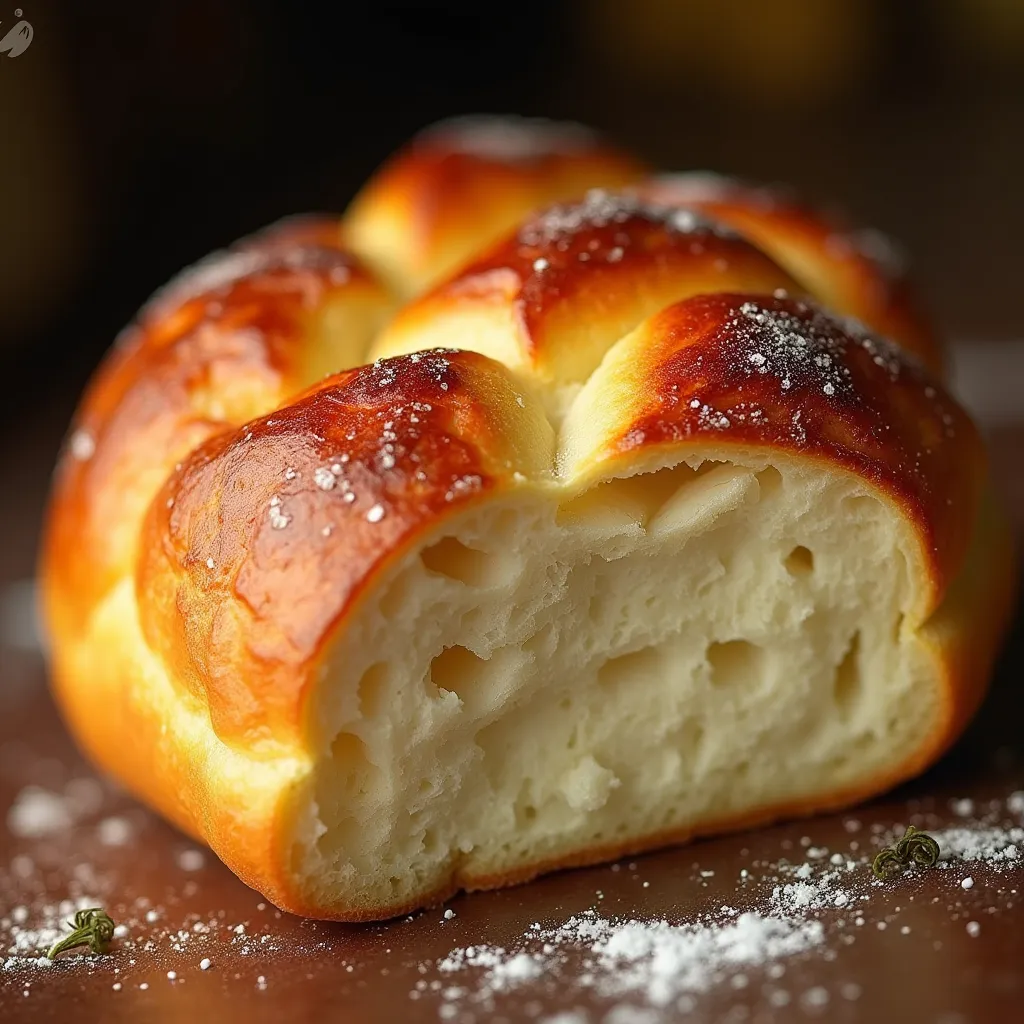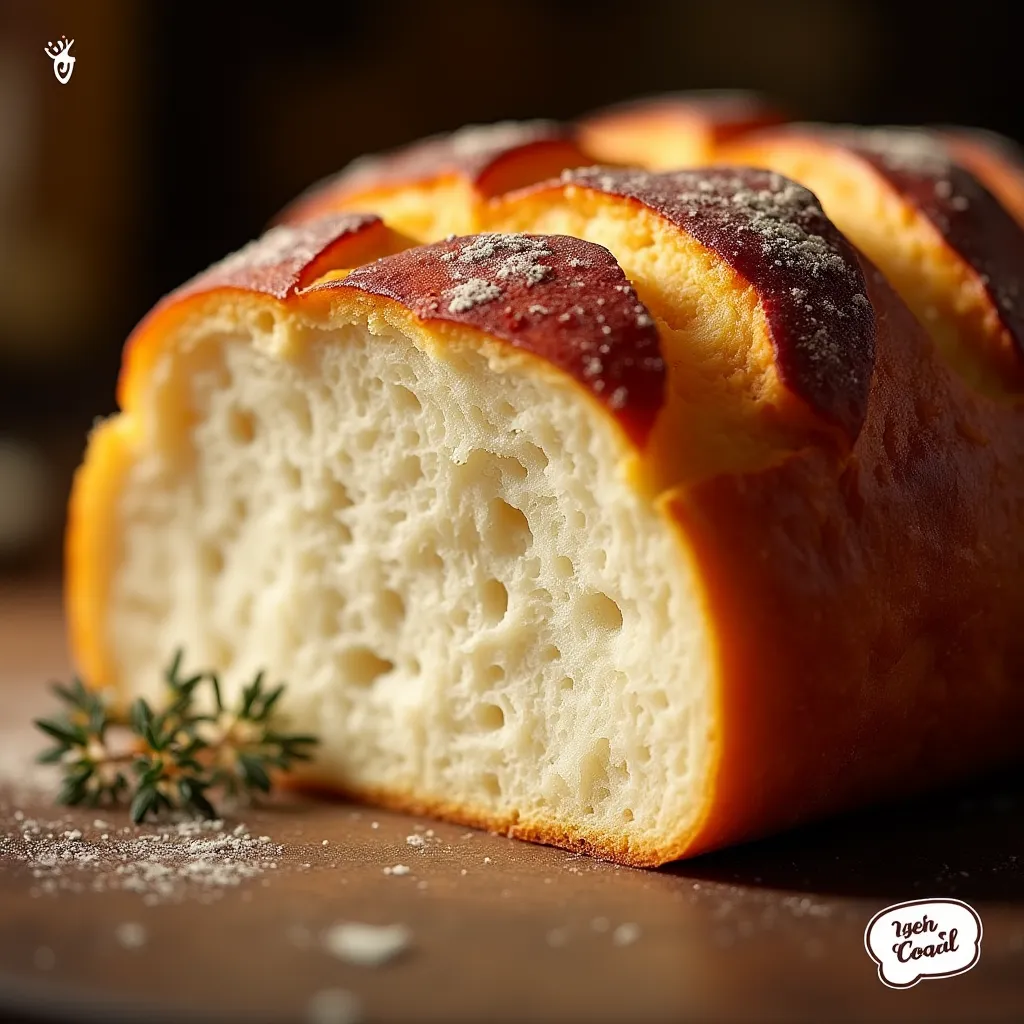 pin it
pin it
I first encountered traditional brioche while studying abroad in France, where I was captivated by its golden exterior and cloud-like interior. This recipe recreates that perfect balance of richness and light texture. I love how the butter is fully incorporated into the dough, creating those characteristic tender layers that pull apart so beautifully. The slight sweetness makes it versatile for both sweet and savory pairings, while the powdered sugar adds just the right finishing touch. Making brioche requires patience, but the process of kneading, proofing, and shaping the dough has become almost meditative for me.
Why I love this recipe
I love this brioche recipe because it strikes the perfect balance between approachable and impressive. While it requires some patience, the techniques aren't complicated, making it accessible even to bakers who might be intimidated by bread-making. The smell that fills my kitchen as these rolls bake is absolutely intoxicating - buttery, yeasty, and comforting. I adore how versatile these rolls are; they work equally well alongside a sophisticated dinner or simply torn apart and enjoyed with coffee at breakfast. The texture is what truly sets these apart - that perfect contrast between the slightly crisp, caramelized exterior and the impossibly light, pillowy interior that seems to melt in your mouth.
What You Need From Your Kitchen
- All-purpose flour: Forms the structure of the brioche dough, providing strength and texture
- Unsalted butter: Creates the rich, tender texture that brioche is known for
- Eggs: Add richness, color, and help bind the dough together
- Active dry yeast: Leavening agent that creates the light, airy texture
- Milk: Adds moisture and helps activate the yeast
- Sugar: Feeds the yeast and adds subtle sweetness to the dough
Let's Make These Together
- Prepare the dough
- Start by activating the yeast in warm milk, then combine with flour, sugar, and salt. Add eggs and softened butter gradually, kneading until you achieve a smooth, elastic dough that's soft but not sticky.
- First rise
- Place the dough in a greased bowl, cover with plastic wrap or a damp cloth, and let it rise in a warm spot until doubled in size. This develops flavor and structure.
- Shape the rolls
- Gently deflate the dough and divide into equal portions. Shape each into a ball by pulling the edges toward the center and pinching to seal. Arrange in your baking dish with space between each.
- Second rise
- Cover the shaped rolls and let them rise again until puffy and nearly doubled. This creates the light, airy texture inside.
- Bake to perfection
- Brush with egg wash for shine, then bake until deeply golden. The rolls should sound hollow when tapped on the bottom.
- Finish with sugar
- While still warm but not hot, dust the tops with powdered sugar through a fine mesh sieve for that perfect finishing touch.
 pin it
pin it
Switch Things Up
I still remember my first attempt at brioche - it was a disaster! I didn't allow enough time for proofing and ended up with dense, heavy rolls. Now I'm much more patient, allowing the dough to develop slowly for maximum flavor. Sometimes I'll add orange zest to the dough for a citrusy variation, or form the dough into a braided loaf instead of individual rolls. The joy of brioche is in its versatility and the incredible aroma that fills your home.
Perfect Pairings
These brioche rolls are wonderfully versatile companions to many dishes. Serve them warm for breakfast with high-quality butter and fruit preserves. For lunch, they make exceptional sandwich bread for chicken salad or premium cold cuts. At dinner, they're perfect for sopping up sauces from hearty stews or alongside a cheese board with soft cheeses like camembert or brie. For a sweet treat, split and toast them, then top with fresh berries and a dollop of mascarpone.
 pin it
pin it
Frequently Asked Questions
- → Can I make the dough ahead of time?
Absolutely! After the first rise, punch down the dough, cover tightly and refrigerate overnight. The slow, cold fermentation will actually enhance the flavor. Shape and bake the next day.
- → Why didn't my brioche rise properly?
This could be due to inactive yeast, liquid that was too hot (killing the yeast), or a room that was too cold for proofing. Make sure your yeast is fresh and use liquid at about 110°F (43°C).
- → Can I make these without a stand mixer?
Yes, though it requires more effort. The dough is sticky and enriched with butter, making it challenging to knead by hand. You'll need to knead longer (15-20 minutes) to develop the gluten properly.
- → How do I know when the brioche is properly baked?
The brioche should be deeply golden on top and have an internal temperature of about 190°F (88°C). When tapped on the bottom, they should sound hollow.
- → Can I substitute the butter for a dairy-free alternative?
Yes, plant-based butter can work, though the texture may be slightly different. Make sure to use a high-quality alternative with similar fat content to butter for best results.
- → How should I store leftover brioche rolls?
Store in an airtight container at room temperature for 1-2 days or refrigerate for up to 5 days. Reheat briefly in a 300°F oven for 5 minutes to restore softness. For longer storage, freeze for up to a month.
Conclusion
These golden brioche rolls offer the perfect balance of butteriness and subtle sweetness. With their tender, pull-apart texture and delicate sugar dusting, they're versatile enough for breakfast or as an accompaniment to dinner. Make a batch on the weekend and enjoy the luxury of homemade brioche whenever the craving strikes.
